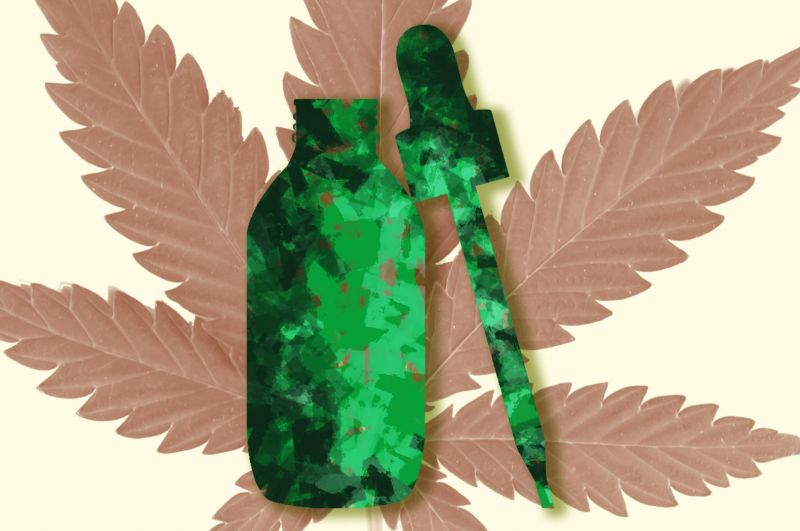
02/02/2023 The Cannabis Mother Load
There are over 100 compounds presently identified in the cannabis plant. THC and CBD are just two of them. They are the most talked about for probably two reasons. A brief rundown of these two compounds will explain why.
Firstly, delta-9 Tetrahydrocannabinol or ∆-9-THC is the compound that most people associate with the "high" of cannabis. THC is lawful for consumption when sold in a state that has passed legal adult-use or states that have medical programs for patients.
Secondly, even though cannabis and hemp are cousins, CBD (non-psychoactive) can come from cannabis but it is highly prevalent in the hemp plant. Since the passage of the Hemp Farm Bill Act of 2018, CBD can be sourced from non-psychoactive hemp.
CBD is then made into one of many products such as whole smokable flowers, topical lotions, oils, concentrates, edibles, beverages, and vape cartridges for the legal consumption market.
Where do THC, CBD, and all other cannabinoids come from? What exactly does CBG do in regards to health benefits? Can CBG help fight disease?
Mike Robinson, the CEO and Founder of the Global Cannabinoid Research Center (CA) states that "CBG is emerging in research and beyond as a very powerful cannabinoid in the fight against Metabolic Disorder - a health issue that over 50 million Americans now have and is the precursor to cardiovascular diseases, diabetes, and various other chronic health conditions that have an extremely high price tag on human health."
CBG (cannabigerol) can pack a wonderfully beneficial punch. Why is it so wonderful? CBGa is present even before any of the other cannabinoids. It essentially creates all of the other ones.
While cannabis or hemp plants are growing, nutrients are being fed to the plant from the soil, UV lighting, and water. As the plant increases in strength and thrives, it needs to make chemicals to keep growing at an optimal rate. These chemicals help the plant fight off insects, repair damage, and make it hardy.
CBG (non-psychotropic) is a chemical present even before THC and CBD but in very small quantities. During cultivation, CBGa, an acidic form, is largely converted to other compounds such as THCa, CBDa, CBCa (cannabichromenic acid) with the application of heat.
This is why CBG is called the "Mother Cannabinoid". The "major" cannabinoids are made directly from CBGa. It is sometimes referred to as a "stem cell". CBGa is classified as a "minor" cannabinoid because there is <1% contained in the plant. However, it plays a "major" part in the production of other cannabinoids.
As the cannabis or hemp plant continues to grow there's less CBG within the plant because of the conversion process. If the plant was to completely mature, there would be little of the CBG left to extract. This added an active issue in regards to harvesting enough CBG for widespread consumption.
With research, it was determined hemp was the answer. Some hemp cultivar strains have been developed to be high in CBG. The answer also lies in when to harvest the hemp plant. The earlier you harvest the plant, the more CBG is present.
CBG is most plentiful in hemp when it is in the mid-cycle of growth. The plants can be harvested before the conversion starts, reaping the bounty of CBG that is present at the time. CBG is then obtained in greater quantities. CBG is either extracted from hemp or cannabis by Co2 or alcohol methods, it is purified and formulated into tinctures, isolated, or crumble.
Currently, there are no scientific human research trials. Research has been done on mice and other animals to determine possible benefits. Analysis has concluded that CBG has antibacterial and anti-inflammatory properties. It has been shown to help with pain, nausea and slows the mushrooming of cancer cells.
Indications are that CBG can help lower cholesterol and protect neurons in the brain. Diseases that may benefit from the anti-inflammatory effects of CBG are Chrohn's disease, IBS, and glaucoma. Anti-nausea and pain reduction properties could help cancer patients.
"More research is always necessary but this offspring of the stem cell CBGa has the power to increase the potency of CBD while also doing some very interesting work on its own including attacking free radicals in the system and beefing up our metabolism", says Mike Robinson.
So far there have been few minor side-effects associated with CBG. These side-effects range from annoying diarrhea to gastric distress. While that sounds awful, these side-effects were noticed when test subjects were given extreme quantities well past the recommended dose. As with any new treatment it is also recommended to follow the guidelines and medical advice of a physician, especially one well versed in cannabinoid therapy.
In all US states and Washington D.C., it is legal to purchase CBG that is hemp-derived. CBG from cannabis is legal in 18 states and Washington D.C. Furthermore, it is legal internationally because it is not listed on the UN Convention on Narcotic Drugs of 1961.
Dosage recommendations are unique to each person and their situation. Starting slow and low is the standard advice for most new treatment regimens. Just remember to check with a medical professional before starting treatment. Research the laws in your area. Go slow and steady and journal your experiences. Health and well being is the goal.
Written by Teresa Martin, Copywriter: Cannabis, Hemp, Medical
Reference Sources:
Global Cannabinoid Research Center: Mike Robinson
unodc.org/unodc/en/commissions/CND/conventions.html
Biochem Pharmacol. 2013;85(9):1306-16.
Carcinogenesis. 2014;35(12):2787-97.
Behav Pharmacol. 2017;28(4):280-284.
Psychopharmacology (Berl). 2016;233(19-20):3603-13.
Biochim Biophys Acta Gen Subj. 2019;1863(3):586-597.
Psychopharmacology (Berl). 2011;215(3):505-12.
Neurotherapeutics. 2015;12(1):185-99.
TAGS:






